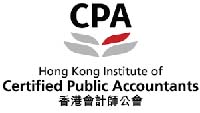Today, the tenth World Water Forum opens in Nusa Dua, Bali. High on the list for discussion will be how should cleaner and more reliable supplies of fresh water and treatment / recycling of waste water be financed? And can delegates draw inspiration from ancient Balinese Warrior Frogs to make it happen?
All governments’ long term plans for building infrastructure include often heroic assumptions as to how much of it will be financed by the private sector. At the same time, the water sector has seen much less private sector finance than most other sectors because:
- It lacks high value equipment beloved of the Export Credit Agencies.
- It brings major uncertainties such as, on the fresh water side, the struggle to control Non – Revenue Water / Unaccounted For Water (i.e. leakage and theft) which can be anything from 32% straight off the top line in Indonesia or only 5% in Singapore or 22% in the UK and 53% in Ireland (!). On the waste water side, increasingly volatile climate has led to increasing numbers of overflow events not to mention not knowing where the pipes are even!
- Laying pipes or digging them up to repair them is a predominantly labour – intensive exercise.
Essentially, water is a local industry, one driven as much by catchment areas as by conurbations.
Most water supply / treatment is therefore provided via the public sector, generally via State Owned Enterprises or at a provincial or city level with perhaps a quasi -public intermediary, most of which will have poor / no credit rating on a standalone basis. Nonetheless, with the right structure, political support and people, the public sector can deliver a very respectable service. The poster child for the public sector in SE Asia is Phnom Penh Water which reduced NRW from 72% during the catastrophe that was the Khmer Rouge in 1992 to 8% by 2022, very respectable by even developed country standards. (Some years ago, I met the indomitable Mr. Ek who made it happen). But government funds are, as ever, limited and are needed elsewhere such as pursuing net zero carbon emissions (which is more important? Having both will be expensive.)
Which is why, when it has happened, private sector finance has come from local, politically influential sponsors (e.g. the Philippines); from one of the two French utilities, namely Veolia and Suez; or, where the regulatory regime has been excessively generous (e.g. the UK), from much larger players such as MacQuarie and CK Infrastructure. The Multilateral Banks and green funds have contributed whilst treading the fine line between taking risks that commercial banks won’t and making a commercial return nonetheless but much more than this is needed.
Thus, how can govts attract gallons (sorry …) more private sector finance to their water industries?
First, they already recognise that supply and treatment are both local monopolies so they must be regulated. Regulation needs to control end – user prices yet incentivise the relentless search for efficiencies and proactive investment, all whilst maintaining a risk profile that is suitably safe. However, this has often gone badly (and since I wrote this, it has only got worse).
Second, offer the private sector a fair balance of risk and reward between govt entities and investors / lenders. This balance needs to work not just in a Base Case projection (the only certainty surrounding which is that what eventuates will be different, just hopefully not by too much) but also in all possible downside and upside sensitivities thereto. Ramming too much risk into the private sector leads to either projects needing to be rescued by the public sector anyway or greater risk premia being demanded next time round. Further, all too often, govts reluctant to embrace PPPs have offered to the private sector only marginal projects which their public sector didn’t like. That tends to not go well either.
The private sector varies enormously, of course, in what risks it will take. At the more risk averse end of the spectrum, there is huge appetite from financial institutions for investment in infrastructure – Brookfield raises $30 billion, Blackrock buys GIP, etc – but not much of this is going into water in emerging markets.
In order to attract this money, opportunities in water need to be structured to be relatively safe. Retail customer payment risk? Rainfall risk? Finding the pipes risk? Govts reneging on undertakings to raise tariffs? Political risk generally? No, thanks. Local players will continue to take some of this risk, especially where they are better able to control it such as in the Philippines, but some form of govt support is likely to be needed for all those sub – sovereign players. Intermediate support may need, in turn, to be back – stopped by central govt / MOF support. This too is in limited supply so it needs to be rationed, it needs to be targeted and it needs to be calibrated so as to fall away once it is no longer needed so as to be available for recycling (sorry, again) into the next entity / project, leaving the private sector to assume risks that it is able to manage or is prepared to assume. If properly pitched to the capital markets, this support can take advantage of the surprisingly varied appetite for quasi – sovereign risk. And it can often avoid resorting to the dreaded G Word (Guarantees).
There is surprisingly little discussion on any of this. However, Logie Group has given advice on central govt support in countries such as Indonesia and India and can do so again.








